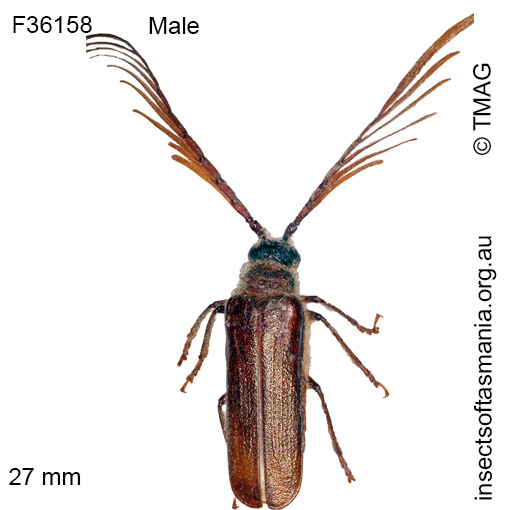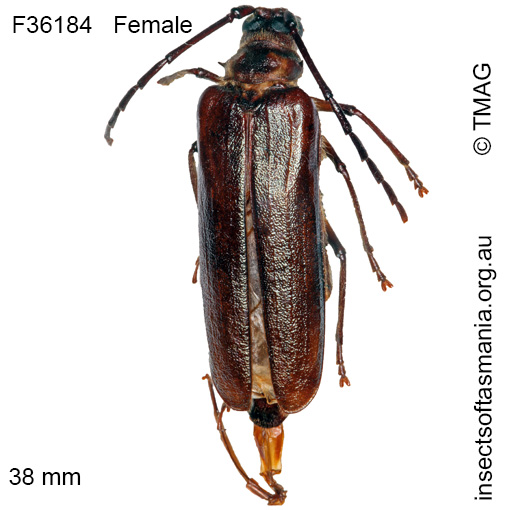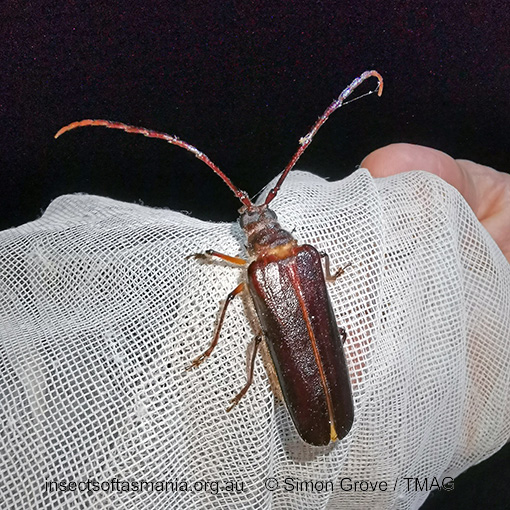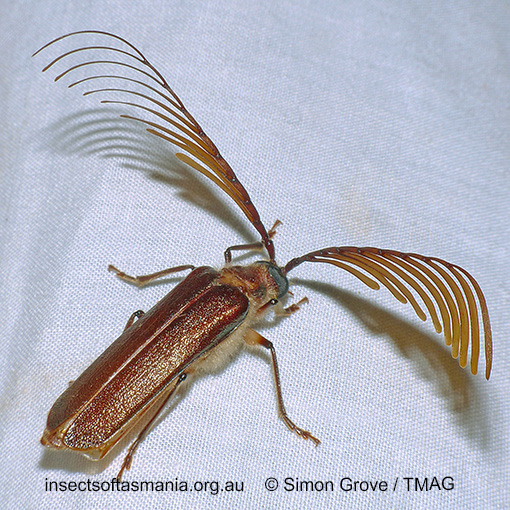
Enneaphyllus aeneipennis
Basis for Tasmanian occurrence
TMAG collections
Classification
Suborder: Polyphaga
Superfamily: Chrysomeloidea
Family: Cerambycidae
Subfamily: Prioninae
Tribe: Meroscelisini
Morphology
Flightedness: winged and assumed capable of flight
Ecology
Association with dead wood or old trees: obligately saproxylic
Ecological attributes: — Atherosperma moschatum is a host-plant (Bashford, 1990a) — Xanthorrhoea australis is a host-plant (Bashford, 1990a) — Affiliated with smaller-diameter logs Yee et al., 2006) — Associated with white stringy rot (Yee et al., 2006) — May occupy logs or trunks of Eucalyptus obliqua, at least temporarily, since found having emerged within six years of felling (Grove et al., 2009).
Collection method(s) for TFIC material: — At light (with use of light-trap) — Baited trapping (funnel trap) — Emergence trapping from log of Eucalyptus obliqua — Flight intercept trapping — Hand collection (substrate not specified) — Malaise trapping — Rearing in insectary (host not documented) — Trunk window trapping (Harrison, 2007) — Vane trapping.
Source ecological literature:
Grove, S.J. (2009b). Beetles and fuelwood harvesting: a retrospective study from Tasmania’s southern forests. Tasforests 18: 77-99.
Bashford, R. (1990a). Tasmanian forest insects and their host plants: records from the Tasmanian Forestry Commission insect collection. Hobart: Tas. Forestry Commission, 32 pages.
Grove, S. et al. (2009). A long-term experimental study of saproxylic beetle … succession in Tasmanian Eucalyptus … logs… In: Fattorini, S. (Ed.), Insect Ecology and Conservation. Research Signpost, pp. 71-114.
Harrison, K.S. (2007). Saproxylic beetles associated with habitat features in Eucalyptus obliqua trees in the southern forests of Tasmania. PhD thesis, Dept. of Zoology, Univ. of Tasmania, Hobart.
Yee, M. (2005). The ecology and habitat requirements of saproxylic beetles native to Tasmanian wet eucalypt forests: potential impacts of commercial forestry practices. PhD thesis, Univ. of Tasmania, Hobart.
Yee, M. et al. (2006). Brown rot in inner heartwood: why large logs support characteristic … beetle assemblages … In Grove, S.J. & Hanula, J.L. (eds.) Insect biodiv. and dead wood, pages 42-56. USDA For. Serv., SRS.




